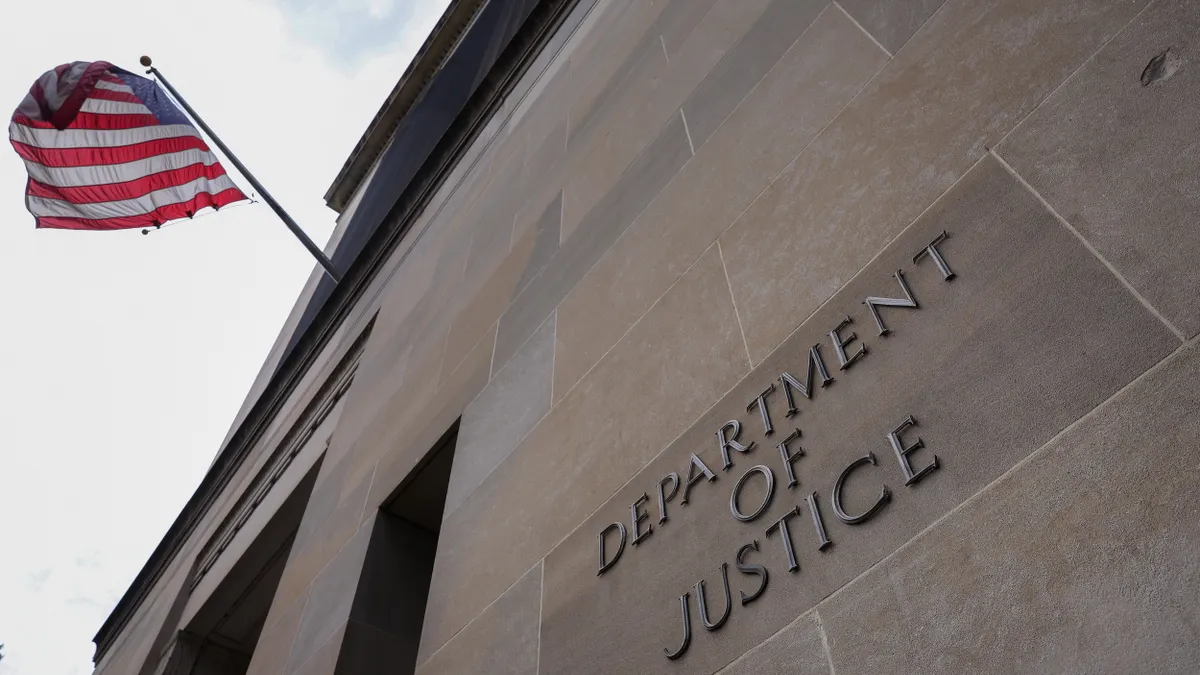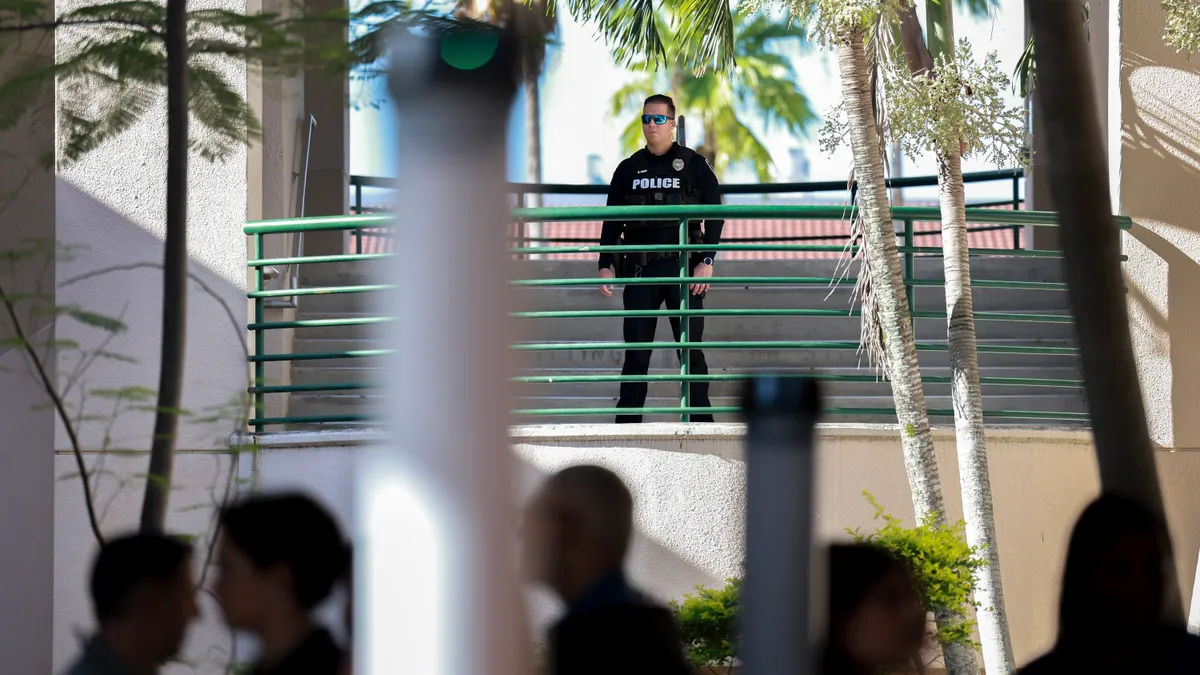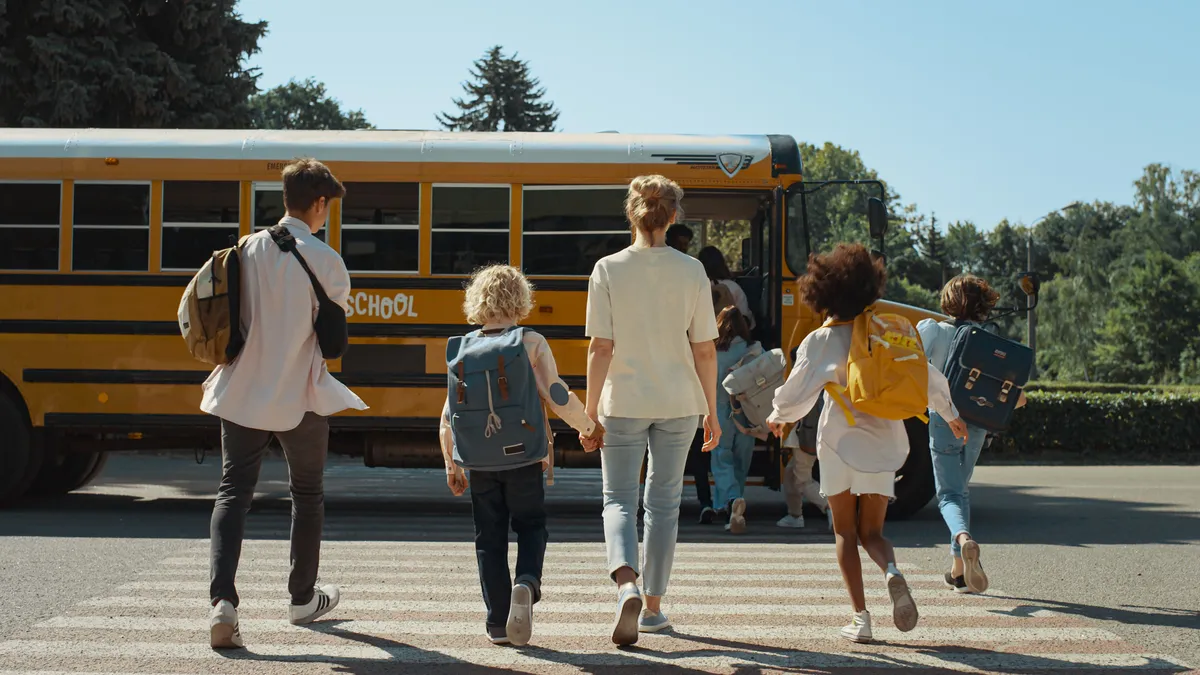The student government association at East Feliciana High School in Jackson, Louisiana, held an online poll in December asking students whether they felt comfortable speaking up in class. They found the majority did not, which led the school to hold a teacher session on engaging students.
Senior Antoine Johnson, the East Feliciana student government association’s president, said he’s seen tangible results from that.
Teachers “are more inclusive. When we get the answer wrong, they push us to try again. If they have disruptive students, they try to take more steps to get to their level,” Johnson said.
Empowering students to express their opinions and provide feedback to teachers and school administrators can improve instructional practices and curricular design, according to a growing body of research cited in a 2022 study published in The Urban Review.
“Student voice can result in changes to practice and policy that are more attuned to student needs and therefore more engaging and effective for student learning,” wrote the authors of “The Relationship Between Student Voice and Student Engagement in Urban High Schools.”
But how can schools take steps to harness student voice and build a culture that provides shared leadership opportunities? Here are six pieces of advice that detail how experts in Massachusetts, Maryland and Louisiana did it in their schools.
Make it easy for students to participate
It’s crucial to present accessible opportunities for students to take on leadership roles, said Ronnie Goldstein, assistant principal and advisor for the student government association at Norton Middle School in Norton, Massachusetts.
About five years ago, Norton Middle School created a Student Council, Ambassadors and Leaders group, or StuCAL, by combining three previous student organizations: student council, student ambassadors and student leaders. Having one umbrella group makes it easier for students to get involved, rather than having to decide what suits them best, Goldstein said.
There is no cutoff to join StuCAL — students can join throughout the year and show up for meetings whenever they can, he added.
“We advertise ourselves as an organization that gets things done and helps make decisions,” Goldstein said.
In Carroll County Public School District in Maryland, all high school students can vote for their student representative on the board of education rather than the decision being up to the student government association, said Ryan Melhorn, the district’s supervisor of social studies.
Student government association members select two candidates in a primary election, which is followed by a general election. This year, the student government association hosted a debate between the two finalists, and a link to a YouTube video was shared with all the high schools, Melhorn said.
“We are trying to make (the process) more democratic,” he said. “Part of our thought process was also to bring more awareness to the position. It’s not like we get 20 candidates, so the kids are more aware of it and also more comfortable contacting the student representative.”
Have multiple advisors, ideally with high rank
There should be more than one staff advisor or sponsor assigned to oversee student government associations, said Brittany Jones, a teacher and sponsor for the student government association at East Feliciana High School.
Besides dividing the work, Jones and her fellow sponsor, also a teacher, can cover for each other’s classes during activities if no other teachers are available. Because the two sponsors teach different grades, they also hear from students with different perspectives and concerns that they can report to the student government association, she said.
Goldstein said having a high-ranking advisor can help further streamline processes. “There is a certain amount of efficiency in getting things done. Obviously, we are all busy and we all have a lot to do, but I do think there is value there,” he said
His position also adds gravitas with the students, Goldstein said.
“We don’t make them sign [behavior] contracts, but we impress upon them, in a verbal way, that we need them to conduct themselves appropriately,” he said. “It helps that in my role as assistant principal, I deal with a lot of the discipline in the building.”
Seek insight from the student body
At Norton, StuCAL helps plan and organize things like “student activity nights,” which encompass school dances, open gym, schoolwide events like “ugly sweater” contests in December and Memorial Day assemblies, community service projects like school beautification and other activities.
Major event changes should be presented for a vote to the entire school body, or at least the affected grades, Goldstein said. For example, when StuCAL discussed changing the 8th grade semi-formal dinner to a more informal luau, the entire 8th grade got to vote via Google Forms.
“Now every year, we give them options and they choose,” he said.
Online surveys can also serve as a great way to elicit participation from students reluctant to speak up or who prefer to remain anonymous, Jones said.
Even when student initiatives fail, it feels empowering to be heard, Johnson said. For example, students unsuccessfully tried to get the OK to use cell phones inside school buildings when not in classrooms. The school’s new policy requires cell phones to be out of sight at all times.
“I felt like our voices were heard and our needs were taken into consideration before making the final decision,” Johnson said.
Likewise, teachers and administrators should be considerate when listening to students, Johnson added. “Nowadays, a lot of students need patience to be able to express how they feel correctly. It takes a lot of time, especially with all the things that go on and how stressful [things are]. I would ask them, ‘Try to understand — even if you don’t.’”
Acknowledge the value of student ideas
A few years ago, StuCAL members discussed the idea of eating lunch outdoors, so advisors held meetings with the principal and custodial staff, and decided to give it a try, Goldstein said.
The move was a success. Norton students can now have lunch outside, one grade at a time, provided the weather is nice and they sit in a designated area and clean up after themselves, Goldstein said.
The new policy was especially serendipitous during the COVID-19 pandemic, he added.
The student government association at Carroll County Public Schools has tackled several weighty topics in the last few years, Melhorn said. For example, it succeeded in making changes to the district’s dress code after it was found to be sexist and overly focused on girls, he said.
It has also pushed school administrators to find better ways to deal with homophobia and racism from peers, as well as microaggressions from staff members, Melhorn said. The latter is “a process we are working through and trying to address” with more training and support for staff, he said.
Additionally, students are pushing to have more mental health days during the school year, though that would require a change in state law, Melhorn said.
Remain open-minded and aware of student leaders’ commitments
Emilie Tedeschi, student representative for the Carroll County Board of Education, said she was inspired to get involved starting in 6th grade when she saw how students successfully pushed for dress code changes.
Those in her position should be encouraged to be proactive in reaching out to the student body, Tedeschi said. She uses social media — primarily Instagram and Twitter — to keep fellow students informed by posting about what’s happening at board meetings and how to be prepared for upcoming decisions. She also holds online polls to get her peers’ opinions on various topics, visits high schools to talk to people in person, and created a personal website that lists her number and email address.
Tedeschi said school administrators should be supportive of the time commitment required by student leadership. “When there are absences or tardiness because you are at a meeting or a conference, always have that understanding for those students,” she said.
School administrators shouldn’t have preconceived notions about allowing only “the ideal students” to join student councils or student government associations and take on leadership roles, Goldstein said.
“We have had some kids over the years who weren’t your typical … ‘leader’ in the face of it. But they came up and joined the organization, and they really surprised us and surprised themselves in their ability to participate and stick to it,” he said.
“You shouldn’t be exclusive when you do this. You should be open-minded,” Goldstein said.
Start in middle school or earlier
Student councils are ubiquitous in high schools across the country and less so among lower grades — but they are just as beneficial, Goldstein said.
High schoolers may be more mature and able to strategize, and more independent for instance with transportation, Goldstein said. But middle schoolers can be just as capable of engaging in student leadership opportunities with some extra support from adults.
“That’s the real difference. Not so much the willingness and the drive and the ambition — those things are there. It’s the practical things. It’s about the level of support necessary.”
Starting early shows students the power of having a voice and often inspires them to remain involved and take on bigger roles in high school and college, he said.
“It teaches kids the responsibility that you’re a school community, and that you can take ownership of it and do what you can to make it better,” Goldstein said.
It’s important to provide an ear to students, no matter what, Melhorn said.
“Sometimes they will tell you things, and it’s like, ‘OK that’s not going to work,’ because they don’t have a good understanding of the system,” he said. “But when they have something to discuss, have a real conversation and try to help connect them to other people they could talk to, to make the changes they would want.”
Goldstein agreed that students “don’t necessarily get to make decisions, but ultimately, we try to take their input as best as possible, and then adapt that and change it in a way that makes sense.”



















